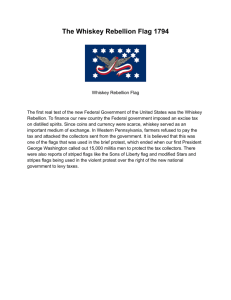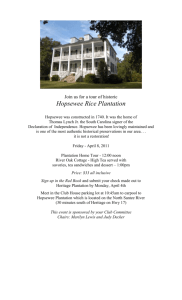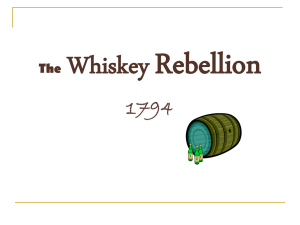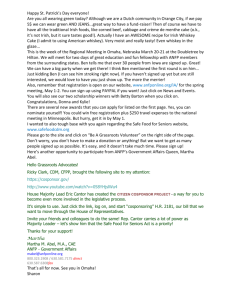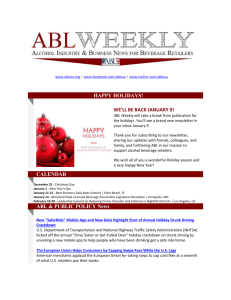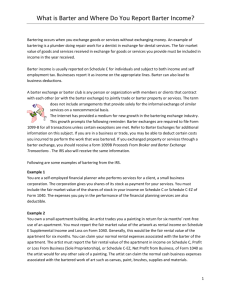The Alcoholic Republic - The Josh Liller Experience
advertisement
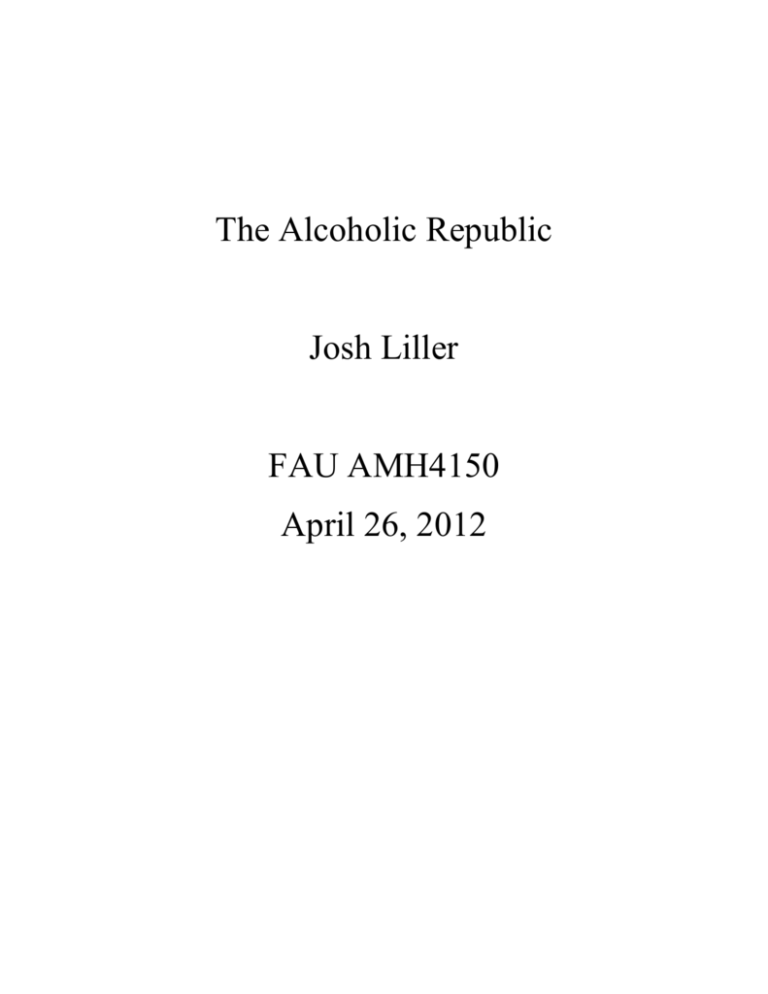
The Alcoholic Republic Josh Liller FAU AMH4150 April 26, 2012 Between 1790 and 1840, the United States underwent profound changes that were reflected in the alcohol consumption rates and drinking habits of its citizens. Rorabaugh notes that the highest drinking rates usually occur in countries that are lightly populated, mostly rural, predominately agricultural/agrarian with cheap and abundant grain, and rely on barter economics. In 1790, the United States met all these criteria; by 1840, all had changed. The US population significantly increased during this time period. While the majority were still farmers, the rise of industry had greatly increased the urban population and created a new middle class. These new middle class workers were paid wages, which caused the decline of the barter economy and gave respectability to wage earning. With more money in circulation and less barter, it was no longer necessary to use whiskey as a form of currency. The concentration of population in urban areas allowed beer to become a viable alternative to whiskey in spite of its limited shelf life. Westward expansion initially outstripped the transportation available, causing people west of the mountains to feel isolated and detached from those back east. This created anxiety and depression which were commonly alleviated by alcoholism. But the disconnect proved only temporary. By 1840, western population had grown and developments in transportation reconnected the west and east. These transportation improvements in the form of canals, steamboats, railroads, and better roads surmounted the geographical barriers thus decreasing the cost of shipping goods. Farmers in what had been major whiskey-producing regions no longer found it necessary to convert grain into alcohol to make a profit when transporting it beyond their local area. Fruit, such as apples, could be transported farther, decreasing the motivation to turn apples into cider. Improved transportation meant beer could be shipped farther and faster so it could be a more viable alternative to whiskey in rural areas as well as urban ones. Industrial developments reduced the cost of the glass needed to make beer bottles and other production costs associated with beer brewing. Better technology allowed alcohol production to be concentrated in the hands of larger brewers who crowded small, local distillers out of the market. This concentration of distilleries changed alcohol – especially whiskey – from a “local commodity” to a “manufactured commodity” and thus much more socially acceptable to tax. The growth over space, internal improvements, and new technologies had created new fields of work. This creation of a “new mobile class without customs, roots, or ties” was full of men who felt “restless, rootless, and lonely”. These included stage drivers, river boatmen, lumberjacks, schoolmasters, trappers, canal builders, and railroad builders. It took members of society time to adjust to these new roles and during this time of stress they turned to alcohol for comfort. People unaccustomed to wages could be persuaded to part foolishly with their money. Factory work was repetitive, monotonous, and impersonal. Alcoholism was a coping mechanism for dealing with unprecedented urban growth. The Industrial Revolution was largely responsible for making cotton become king in the South, but this caused a large increase in the number of wealthy plantation owners who did not know what to do with all their newfound wealth. The small number of wealthy plantation owners before had tried to imitate educated, cultured, refined English gentry. The suddenly rich cotton plantation owners were usually uneducated and culturally unrefined so they squandered their newfound wealth on “conspicuous consumption”, “crude materialism”, and frivolous entertainment like gambling and alcoholism. Ideas of egalitarianism leftover from the American Revolution combined with the economic changes that created a middle class and expanded the upper class caused a collapse of the colonial-era social hierarchy. The master-apprentice system used by artisans and craftsmen broke down. Education struggled to cope with the changes, leading to drunkenness and rioting by college students who were frustrated and contemptuous of “institutions that failed to provide them with a useful, up-to-date, republican education.” All the technological changes lead to a struggle of opportunity and aspirations. America had been a “peasant society” rooted in a traditional that stressed virtue and security and had low motivation. Economic changes created frustration, anxiety, and guilt as Americans were presented with unprecedented opportunity, but they found themselves unable to achieve their impossibly high goals. Alcohol was a coping mechanism for these negative feelings while also serving to decrease inhibitions thus increasing drive. For some, economic development over time made their goals easier to achieve. For the rest, they raised their children in a manner to compensate for their feeling of failure. With high aspirations and low motivations, they raised children to be independent and highly motivated – the attitudes those children needed to succeed where their parents had been inadequate. This new generation was better suited to cope with and benefit from the new technology and industry of their time. Their ambition and motivation caused a willingness to postpone gratification and see alcohol consumption as a waste of time and money. The new generation of Americans driven by realism rejected their parents’ views of equality and liberty as idealistic abstractions. Instead the simple traditional life of their parents, they strove for happiness via “enterprise and evangelical religion” which lead to the strange juxtaposition of capitalism and industrial growth with the Second Great Awakening.
